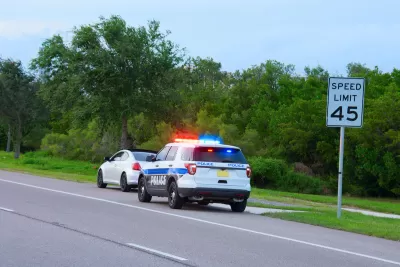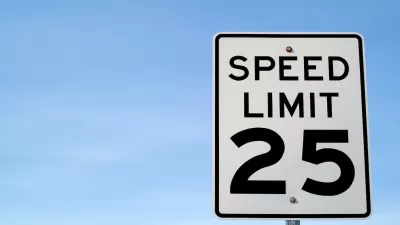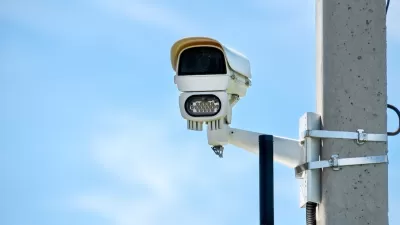Drivers sometimes defend speeding by arguing that it is safe as long as other drivers are also speeding. This argument only makes sense in the context of a limited-access highway.

As street safety advocates have repeatedly pointed out, speed kills: in particular, a pedestrian struck by a car going 40 miles per hour is far more likely to die than one struck by a car going 20 miles per hour.
But I’m not sure how many motorists realize this. A common perspective was once stated by a relative of mine: “Speeding isn’t dangerous. What’s dangerous is when one person is going more slowly than everyone else.” For example, when other drivers are going 60 miles per hour, and one person is going only 30 miles per hour, the fast drivers might be more likely to rear-end the slow driver, because they are expecting the slow driver to go at their speed. Thus, fatalities are least likely when everyone is driving 60 miles per hour.
This argument might make sense in the context of a limited-access highway. On such a highway, it is reasonable for a driver to expect all road users to be traveling at roughly the speed limit (or maybe even a little faster). Moreover, a lower speed limit might have fairly modest safety benefits, because even a motorist struck by someone going slowly by highway standards (that is, 40 or 50 miles per hour) is still reasonably likely to die or be seriously injured.
By contrast, other types of streets are full of slow-moving, vulnerable road users: not just pedestrians and cyclists, but also cars that are slowly turning into a store or intersection, or cars stopped waiting for a light to change or waiting to yield to oncoming traffic. In such a situation, it is not practical to expect everyone to go the same speed, and a reasonable driver would be aware of this fact. It logically follows that on regular streets full of walkers and stopped cars, speed kills: that is, a street where drivers go 40 miles per hour is likely to be the site of far more death and injury than a street with slower traffic.

Study: Maui’s Plan to Convert Vacation Rentals to Long-Term Housing Could Cause Nearly $1 Billion Economic Loss
The plan would reduce visitor accommodation by 25,% resulting in 1,900 jobs lost.

Placekeeping: Setting a New Precedent for City Planners
How a preservation-based approach to redevelopment and urban design can prevent displacement and honor legacy communities.

Using Old Oil and Gas Wells for Green Energy Storage
Penn State researchers have found that repurposing abandoned oil and gas wells for geothermal-assisted compressed-air energy storage can boost efficiency, reduce environmental risks, and support clean energy and job transitions.

Washington State Plans Ambitious ‘Cycle Highway’ Network
The state is directing funding to close gaps in its existing bike network and make long-distance trips more accessible.

Homeowners Blame PG&E for Delays in ADU Permits
The utility says it has dramatically reduced its backlog, but applicants say they still face months-long delays for approvals for new electrical work.

Rethinking Wildfire Defense: How a Landscape Approach Can Protect Neighborhoods
Post-fire analysis of the Eaton Fire reveals that a landscape approach — including fire-resistant vegetation, home hardening, and strategic planning — can help reduce wildfire risk, challenging assumptions that trees and plants are primary fire hazards.
Urban Design for Planners 1: Software Tools
This six-course series explores essential urban design concepts using open source software and equips planners with the tools they need to participate fully in the urban design process.
Planning for Universal Design
Learn the tools for implementing Universal Design in planning regulations.
Borough of Carlisle
Caltrans
Heyer Gruel & Associates PA
Institute for Housing and Urban Development Studies (IHS)
City of Grandview
Harvard GSD Executive Education
Salt Lake City
NYU Wagner Graduate School of Public Service
City of Cambridge, Maryland






























